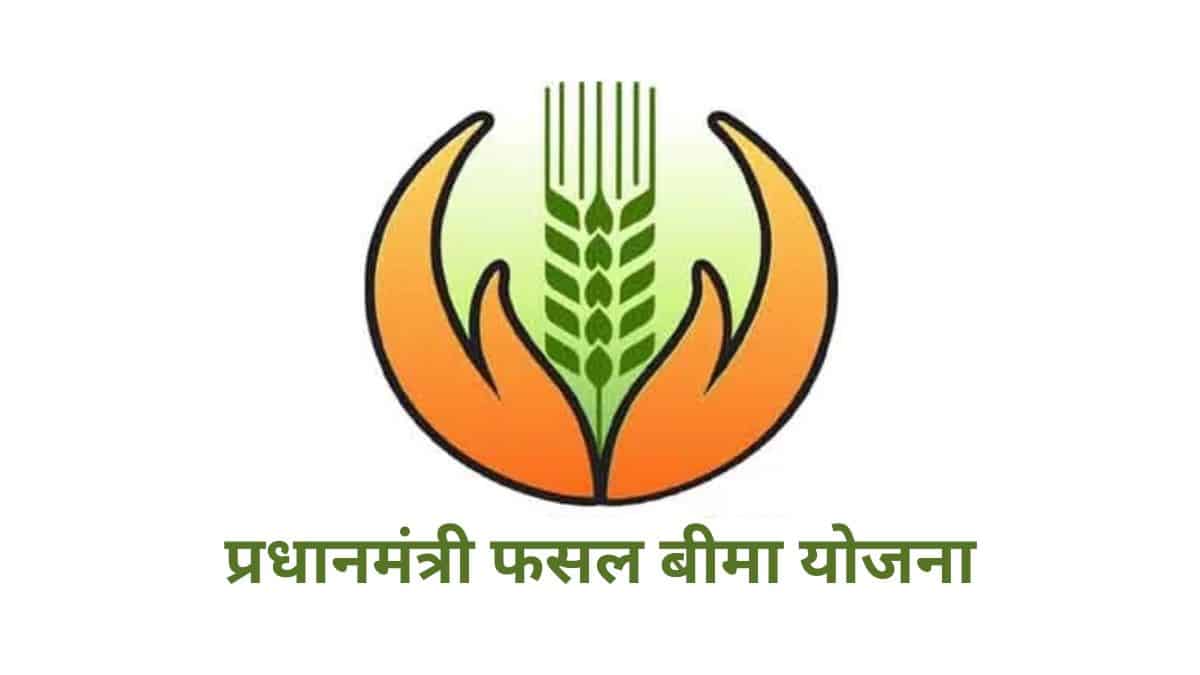HIGHLIGHTS
- Introduction about the Pradhan Mantri Fasal Bima Yojana (PMFBY).
- In this article, we see how PMFBY works and its benefits.
- Challenges and criticisms in PMFBY.

The Pradhan Mantri Fasal Bima Yojana or shorter PMFBY is another one of the unique schemes launched by the Government of India with the help of which farmers all over the country can get crop insurance.
The scheme was initiated in the year 2016 with the help of which the government aims to put a shield around farmers against the worst financial shocks due to natural calamities, pests, and diseases.
In this respect, PMFBY provides the farmers with reasonable premiums and hassle-free claims so that their income is protected and they continue to positively impact Indian agriculture. This article aims to discuss significant aspects of PMFBY and demonstrate how it helps the farmers and contributes to the Indian food security system.
Table of Contents
Introduction
Welcome to your source of reliable and helpful information is here with you. This blog focuses on the Pradhan Mantri Fasal Bima Yojana and covers all that you need to know about this prime agricultural insurance plan. It is an important product in agriculture and delivers necessary funds to farmers in the case of various risks attributable to nature’s influence.
This guide is going to explain how PMFBY assists the farmers of India as well as the agricultural field by managing the risks, encouraging sustainable agriculture, and certainly food security. It is somewhat our planned endeavor to explain how the hope of this program will usher in changes in the living conditions of the farmers and, in general, the agriculture scenario of India.
What is Pradhan Mantri Fasal Bima Yojana (PMFBY)?
An overview of PMFBY as an agricultural insurance scheme
PMFBY is an agricultural insurance scheme of the Government of India that offers contingency insurers to farmers. This scheme is to sanction money and make an income guarantee for the farmers in the case of losses occurring due to natural calamities, pests, or diseases.
Launch Date and History:
Launch Date: It made its debut on January, 13th 2016 at the PMFBY.
History and Key Milestones:
- 2016: releasing of a federated benefit scheme by the prime minister which integrated its counterpart like, the national agricultural insurance scheme (NAIS & Modified NAIS).
- 2018: As a result of the constant enhancements to the scheme, the government introduced other strategies to enhance the effectiveness of the scheme for instance, incorporating information communication technology in the assessment and processing of the claims.
- 2020: More enhancement was done in terms of adding coverage and as compared to it the claims process and procedure were more convenient.
Primary Goals:
- Financial Support: The compensation should be paid to farmers in the case of crop failure thus helping them financially to feed the country.
- Risk Stabilization: Reduce the financial burden on farmers caused by crop failures due to unforeseen circumstances, ensuring that their income remains stable.
- Income Security: Protect the major incomes from instabilities, which are characteristic of crop farming, to improve the sustainability of agriculture.
Eligibility Criteria:
To be eligible for PMFBY, the following criteria must be met:
Farmers: Again both individual and group farmers are allowed. It also includes small and marginal farmers as well as the large farmers Most of the above holdings are owned by.
Crop Coverage: Fodder and commercial crops, horticultural crops and fruits, and all types of crops growing commonly such as cereals, pulses, and oilseeds are included in the scheme.
Geographical Coverage: The scheme is operational throughout all states and union terrains of India but differs in some of the details according to the type of farming that is being conducted.
Enrolment Process:
Application Submission: They have to apply through their state government through the Department of Agriculture or through insurance companies that have been authorized to offer the insurance. Most of them can be submitted through online government websites or physically through city halls or some other government offices.
Documentation: Usually, necessary documents are the following ones:
- Proof of identity (For example Aadhar card, Voter ID card which in India)
- Ownership or lease of the land under the area to be developed.
- Bank account details
- Information concerning the types of crops being grown and the proportion of the land that is devoted to each crop.
Enrollment Deadline: Enrollment normally takes place before the commencement of the sowing season; however, certain dates are specific to the kind of crop and area. Farmers are advised to sign up for the insurance as early as they can to guarantee them for the entire planting season.
Premium Rates:
- Kharif Crops: Affordable premiums for Kharif (monsoon) crops stand at about 1- 2 percent of the amount underwritten.
- Rabi Crops: Rabi crops or winter crops attract premium rates and are mostly priced at around 1. The cost V is 5 percent of the sum insured.
- Commercial and Horticultural Crops: Premiums are again usually higher at 5% of the agreed sum insured as most of these crops are high-risk crops.
Subsidies Available:
The government provides subsidies to reduce the burden of premium costs on farmers:
- Farmer’s Contribution: Farmers contribute a marginal proportion of the premium which for Kharif crops is 2% for Rabi crops is 1. 5% and for the commercial/horticultural crops it is 5%.
- Government Subsidy: Thus, the remaining part of the premium amount is borne by the central as well as the state government. The specific percentage may also be adjusted, which reaches nearly 100 percent of the total premium amount.
Types of Risks Covered:
- Prevented Sowing/Planting Risks: In this case, compensation is done for losses incurred on crops that cannot be planted at one instance they are affected by weather hampers or any other circumstance allowed in the policy.
- Post-Harvest Losses: Insurance for losses that happen from the time of cutting to the time the crop is sold.
- Localized Calamities and Natural Risks: Such hedges may range from risks that are within small-scale calamities, floods, poor rainfall, hail storms, and any other calamities that may affect certain regions.
Exclusions:
- Intentional Damage: Damage that has been carried out deliberately to the crop or which has been carried out through negligence by the farmer.
- Unlisted Risks: Any land not excluded from the schemes or mentioned in the policy documents or that type of pest or disease not described in the cover.
- Pre-existing Conditions: Transportation that occurred due to any sickness as well as any injury that existed at the inception of the policy.
Claims Process
Report Crop Loss:
- Step: Report the loss of crop to the insurance company within the locality or the department of agriculture.
- Timeframe: To prevent sowing/planting risks, the report should be sent within 72 hours of the occurrence of the loss while in the case of post-harvest loss, a report should be sent within 48 hours of the time of harvest.
Assessment of Loss:
- Step: A team is sent to the farm to estimate the level of loss that has occurred.
- Timeframe: Evaluation is often carried out within 7-14 days from the time that the case has been filed.
Submit Claim Form:
- Step: Complete a claim form with the necessary paperwork and then it has to be forwarded to the insurance company.
- Timeframe: It is their work to submit the claims within an appropriate period of 14 days after the loss has occurred.
Verification and Processing:
- Step: The insurance provider then checks the correctness of all the claim details and goes on to work on the claim.
- Timeframe: So verification and processing will take 30-45 days from the date of submission of the application.
Claim Settlement:
- Step: The farmer is paid according to the loss and the sum insured by the farmer.
- Timeframe: A settlement usually happens within fifteen to thirty days of processing.
Documentation Required:
- Proof of Identity: Aadhar card, voter ID.
- Proof of Land Ownership/Tenancy: Titles deeds, leases, or cartularies.
- Bank Account Details: It is for the direct transfer of the claim amount.
- Crop Details: Details of the crop affected which include type of crop and area it is produced in.
- Loss Report: If there are, photos or documents that show that certain areas were affected by the disaster.
Benefits of PMFBY
Financial Security:
Economic Stability: Thus, PMFBY covers compensation facets of other crops as well that are damaged through natural calamities, pests, or diseases. This support gives farmers an economic possibility of being able to bounce back since they are pulled out of the financial hole that they would have sunk into as they accumulate debts when development fails. Thus, farmers get better ways to plan their finances to comfortably engage in agriculture work without feeling a lot of losses.
Risk Management:
PAS is for prevented sowing, post-harvest losses, and Village Level Disasters all of which fall under the scheme. Thus, PMFBY is useful because protects farmers from losses that are inevitable in crop cropping. Such broad briefing assists in restricting the occurrence of loss-making and makes it possible for farmers to plan for farming activities in the future with more certainty.
Increased Farming Confidence:
The fact that the farmers are shielded by insurance for their crops and undertaking ensures that they orient towards the appropriate and optimal application of new methods in farming. The guarantee in terms of monetary loss makes them more relaxed to experiment with new techniques since this will aid in the improvement of the practice of agriculture.
Government Support & Subsidy:
This way it appears that the government comes in to support the insurance policy by part paying the insurance premium to make it easy for the small-scale and the marginal farmer to accommodate it. This makes the crop insurance scheme more effective because the government through the grant funding of the premium costs makes it a point that everyone regardless the status is covered.
Challenges & Criticisms
Implementation Issues:
- Delayed Claims Processing: While making a claim or seeking a settlement, there are times when the process can take some time and this makes farmers agitated due to their need for quick solutions.
- Inaccurate Assessments: This criticism isounded regarding problems in the loss assessment, as well as in the evaluation of the losses and the fairness of compensation.
- Limited Coverage: However, areas and certain categories of crops can be left out or provided with only restricted protection.
Awareness & Accessibility:
- Lack of Awareness: It reintroduced the scheme but most farmers especially those operating in the rural areas are still relatively unaware of the specific benefits of the scheme, the procedures to follow when joining the scheme, and the general procedures of joining the scheme.
- Accessibility Issues: The farmers may have challenges in visiting the enrollment facilities or they may not be conversant with some of the requirements in the documentation thus causing low enrollments among them.
Solutions Proposed:
- Streamlining Processes: Among the drawbacks that need attention to be corrected, the following can be pointed out In this regard therefore the following areas which need improvement include The claims processing, especially the training of assessors; The use of technology to develop the assessment and payment systems.
- Enhanced Transparency: It is possible to avoid prejudice by explaining the methods for rating and conducting many checks to increase the effectiveness of the system.
- Awareness Campaigns: Thus, seminars, awareness programs, demonstrations, and extension services are some ways through which the farmers will be able to understand the operation and importance of the scheme. Other local farmers, and other leaders in society such as local agricultural officers, can also assist in the same dissemination.
- Simplified Enrollment: The thoughts behind it are that the changes in enrollment procedures and all this paperwork will help farmers to join easily. The rest of the relevant strategies relate to the enhancement of the online surfaces and the opening of local help desks.
Conclusion:
The Pradhan Mantri Fasal Bima Yojana (PMFBY) has a big impact on farmers’ financial stability and risk management. It protects them from many farming risks. PMFBY gives farmers economic security, boosts their confidence in farming, and offers low-cost premiums thanks to government help. Eligible farmers find PMFBY a useful way to protect their farming investments. If you think you or someone you know could use this program, think about signing up or telling others about it. This can help more farmers get support and make their farms stronger.
FAQs
What are the advantages of Pradhan Mantri Fasal Bima Yojana?
PMFBY ( Pradhan Mantri Fasal Bima Yojana): Objective … PMFBY protects farmers from crop losses caused by various dangers, including natural disasters like drought, flood, and cyclone as well as pests and diseases.
Which crops does PMFBY cover?
PMFBY insures field crops such as cereals, pulses, oilseeds, and some yearly commercial crops. The Restructured Weather-Based Crop Insurance Scheme (RWBCIS) covers horticultural crops fruits and vegetables.


